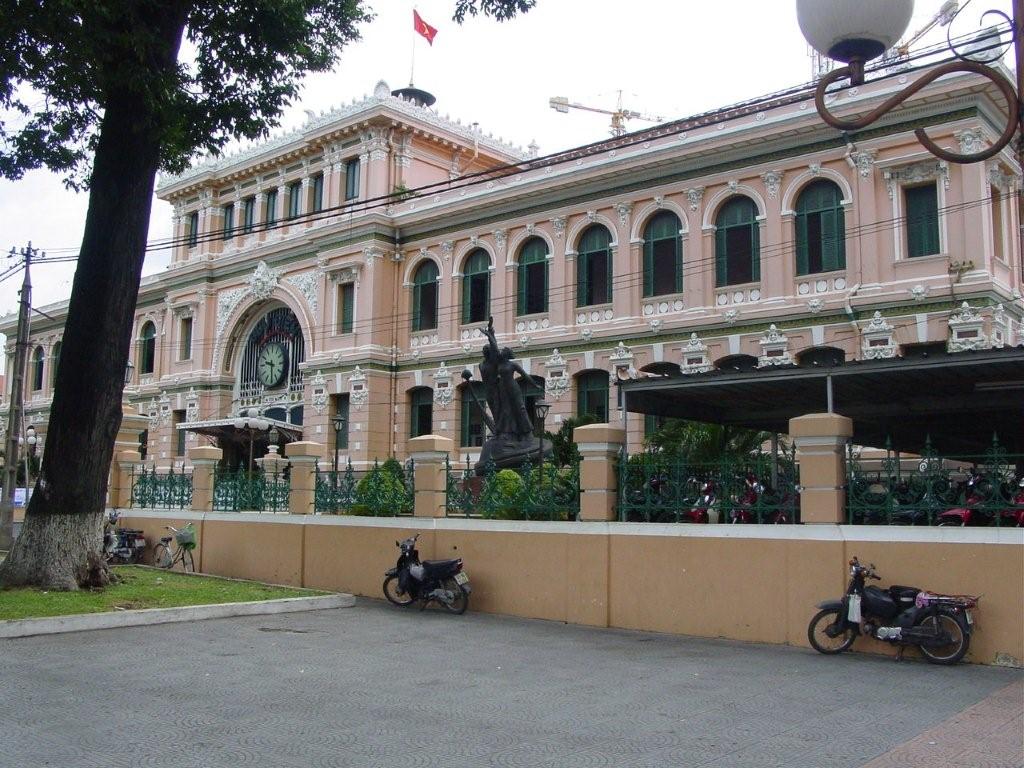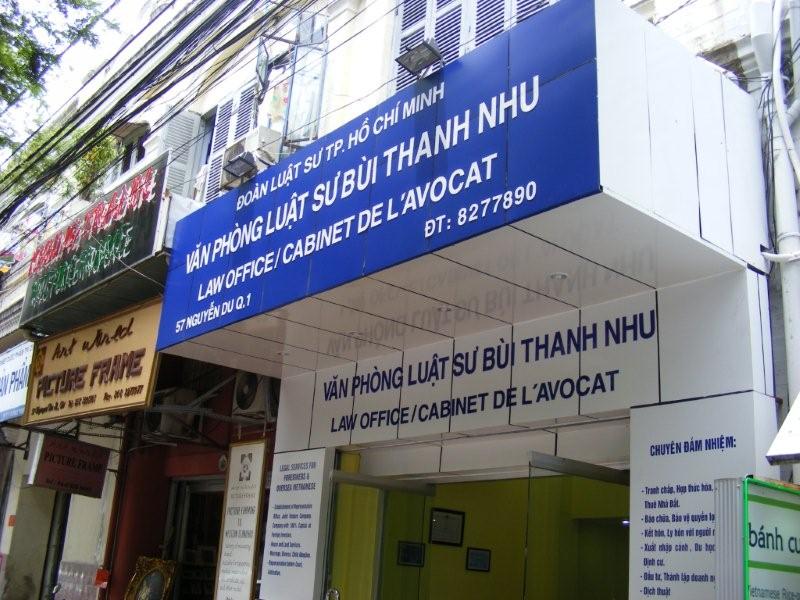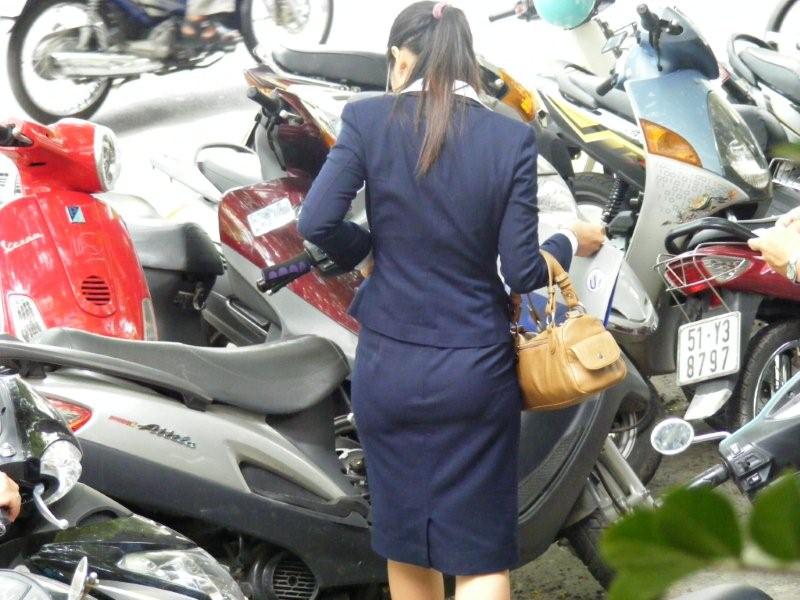Saigon was the name of the city when I was "in country" from October of '66-May of '68. The capital of South Vietnam from partitioning in 1954, I believe to 1975 when the South Vietnamese government surrendered and the North Vietnamese reunified the country.
In 1968, the population was 2.5 million and today, Ho Chi Minh City is a sprawling city of 8.5 million.
On a following page are the many varied land markets...Ever see skinned Rats?
Here's what I wrote to my email list, followed by pictures.
First
Full Day
Welcome, to Mississippi East. Hot, muggy, dripping sweat,
showers in the afternoon. We're at the start of rainy season where it
rains in Ho Chi Minh City, Saigon at least two hours each afternoon.
Much has changed, most has not. A lot of construction, road
building, ultra modern buildings in central business district, Hotels are
same on outside, but very modern inside. Most built by French.
Oldest in 1893, three more including ours from 1900 to 1930. But still
modern inside, GREAT service...and the prices...they're not cheap. In fact
don't think you're coming to a country where you can get stuff cheap. Our
lunch today was $20 each, could have gotten much less had we chosen to carve up
a chicken hanging out on the street,
Got here Tuesday night (our day here). At 11:30 p.m. passed
the Cathedral downtown built more than 100 years ago by French...Scores of
people were outside praying. Did not look to be organized...just praying.
Expected to see A LOT of military, but besides custom have only
seen one jeep all day long. It was one of ours and looked brand new.
Went to Cho Lon--Chinatown here, and several other markets,
There's no way to forget them. CROWDED as always, anything and everything
for sale from gold to fish and vegetables, cloth of all kinds, cookware, you
name it. And Haggling--Also the smells--a mixture of foods cooking, bread
baking charcoal burning, and people doing their business, but I have to say they
were clean.
I was going into one public place and three ladies yelled at
me..."Sir, Sir, one dollar, please." Yes, nothing is free.
Went to the US embassy, now consulate. Did not go in.
We may do that later. Was a monolith on the outside of the wall, actually on
sidewalk commemorating the Viet Cong soldiers who died for victory on the lawn
during Tet of '68. I remember well the buildings around the embassy
at that time and the soccer field nearby which was a battleground area.
Oh, when we got here last night, we went up to the rooftop garden lounge. We are staying at the Rex Hotel. It was after midnight, a Vietnamese band was playing US songs. I remembered, I have been here before.
|
This is the Rex Hotel where we
stayed. You can see the palms on the roof top for the appropriately
named Roof Top Restaurant and Bar.
Several nights we kicked back for a beer or two. You can imagine how the French during their colonial days looked down upon the Vietnamese both literally and figuratively. From this site, U.S. Army officers, Senior NCO's and diplomats staying here during the war would have seen "The Continental Hotel" (another place U.S personnel stayed) bombed at breakfast time at the very beginning of the war. A short distance from here was the famous "rooftop" where hotel guests would have seen the last Americans leaving Vietnam in 1975. Note the flag. Like the U.S. flags are flown from government buildings, businesses, hotels, and the like. seeing them during the day was not a bother, but after a while, watching them at night from the roof got to be painful. |
| Three more hotels played a prominent role during the
war.
From top are The Caravelle, The Continental, and The Majestic. All housed military and diplomatic personnel during the war. Today they look pretty much like they did then. BUT, the insides are very modern, with all the conveniences one would ask for from a superior hotel--great food, great rooms, and service that absolutely surpasses anything offered in the states. Doors are opened for you, bed turned down, laundry done, staff falling all over themselves to help you, and the ladies--well--fine, very fine. |
|
Our guide told us 8.5 million people live in Ho Chi Minh City and there are 4 million motorbikes or scooters. No Harleys. As you can see the preferred mode of transportation is the motor scooters. A family of five fits on one, we saw it. Our guide took us to the airport on the last day. His wife was there to meet him to take him home on their scooter--she was carrying her 14 month old in a seat on the gas tank and scooted back so her husband could drive. We saw a man with five dogs on one, three behind him (in a three side cage, no back), on across the tank, one on his lap--going to obedience school. Drivers carry live pigs on these, washer machines, window panes. we witnessed all of them. There is public transportation, but it is not used because people prefer their own ride. When I was there, the three wheeled Lambretta with driver and a covered rear that could transport 6 people comfortably but usually packed them in like sardines was popular--can't see any today. December, '07 helmets became mandatory. You see scooter sales shops and helmet shops all over the city and country. |
| Notre Dame Cathedral built by the French in the late 1800's
in the downtown area.
When we arrived on a Tuesday night at 11:00 p.m. (I believe it was Tuesday), a fairly good gathering of people were at the doors and in the garden area praying. Nothing organized, just praying. The two main religions are Buddhists and Catholicism. Pagodas and churches abound. On Sunday we passed a Catholic Church at the end of Mass in the country. The men were wearing coats and ties. This may be a Communist Country, but we learned that religion is openly practiced. Note, the glass building behind the Cathedral. This is the Diamond Plaza, a high rise department store and office building. The Department store rivals anything Neiman-Marcus or Macy's might put up. Very modern, full of western products, and like the name brand upscale department stores in the U.S., jewelry and cosmetics are on the first floor. Toys have a floor to themselves as does software, appliances, and "entertainment" like arcades. |

|
The Post Office was built by the French early last
century. The outside looks the same, but the inside is modern, well
lit, and air conditioned by Trane units.
Around the exterior of the front wall are plaques naming famous French Scientists. Only one is non-French...and guess whom? If you said Ben Franklin, you're right. Note picture of Ho Chi Minh on back wall. His picture or statue of some type is prevalent throughout the country. I purchased a lot of stamps here and postcards. On the streets, every body hustles. They don't beg, they sell stuff. You name it, they sell it: prepared (on the street) food, t-shirts, gifts, postcards. I purchased enough postcards to start my own business. Everybody WORKS. Oh, there's also enough clerks at the windows to prevent lines...Hello, Clarksdale P.O. |
|
Motorbikes, motorbikes everywhere. Park them on the
sidewalk, in stores, anywhere there's a place.
Here bikes are being parked on a sidewalk where a guy makes a living charging for space. This area is in the business and banking district. Note the lady in the first two pictures. Women cover themselves from head to foot while traveling. Just about everybody wears a surgeon type mask, but women cover their entire face, arms, and legs to prevent their skin from getting any darker and being "weathered".
Whoa, Nellie, how did that last picture get in there? Most people wear western style clothes, jeans, businesses outfits, like us. The traditional outfit is an "ao dai" (owl die). Very, very nice and shows off fit, form, and function. I believe I may have a picture of one on another chapter. |
| In the immediate central business district, around the hotels, post office, Cathedral, Diamond Plaza, you won't see any electrical wiring. But when you leave the CBD (hard to tell when you do) wiring everywhere looks like this. What a nightmare for an electrician. Electrical supply capacity is growing. There are occasional blackouts, but not like you might expect. Still, they are in need of capacity |
| Housing:
You'll see on other pages how the other 90% lives. The second, third and fourth pictures are homes for the rich and famous along the Saigon River. A bridge built by the American company KBR during the war is at the second picture. This whole area when I was there the first time was slums. Obviously they have been moved. Besides wealthy Vietnamese, many, many, many foreigners have their second homes here, or their first if they have corporations in the country. We were told many Vietnamese soccer or pop music stars live in these homes. The starting price $2 million USD. While the bottom picture has homes separated, this is not normal and a year or two, the space will be filled in. Buildings in the city are like these, much older, and each one shares a wall with another--no space between. Typically in the city, a shop will be on the ground floor, and subsequent above floors will be apartments. Buildings are no more than 15-20 feet wide and fairly deep as you can see. In the city and 3 meter frontage and three stories high will cost you $1.5 million USD. Incidentally, all businesses must be owned by a Vietnamese, at least in name. |

|
The top picture, I throw in for my attorney friends.
Note how narrow the stores are. Most of the store fronts are in
English as are the billboards. When you give percentages, you know
there is something made up, but I would guess 90% of the billboards
feature Western women and men, mostly women. The ways of the
"west" are very much sought here.
The bottom picture illustrates that even in Vietnam there is a problem. Other billboards that abound promote condom use and "Don't drink and drive" themes. |
